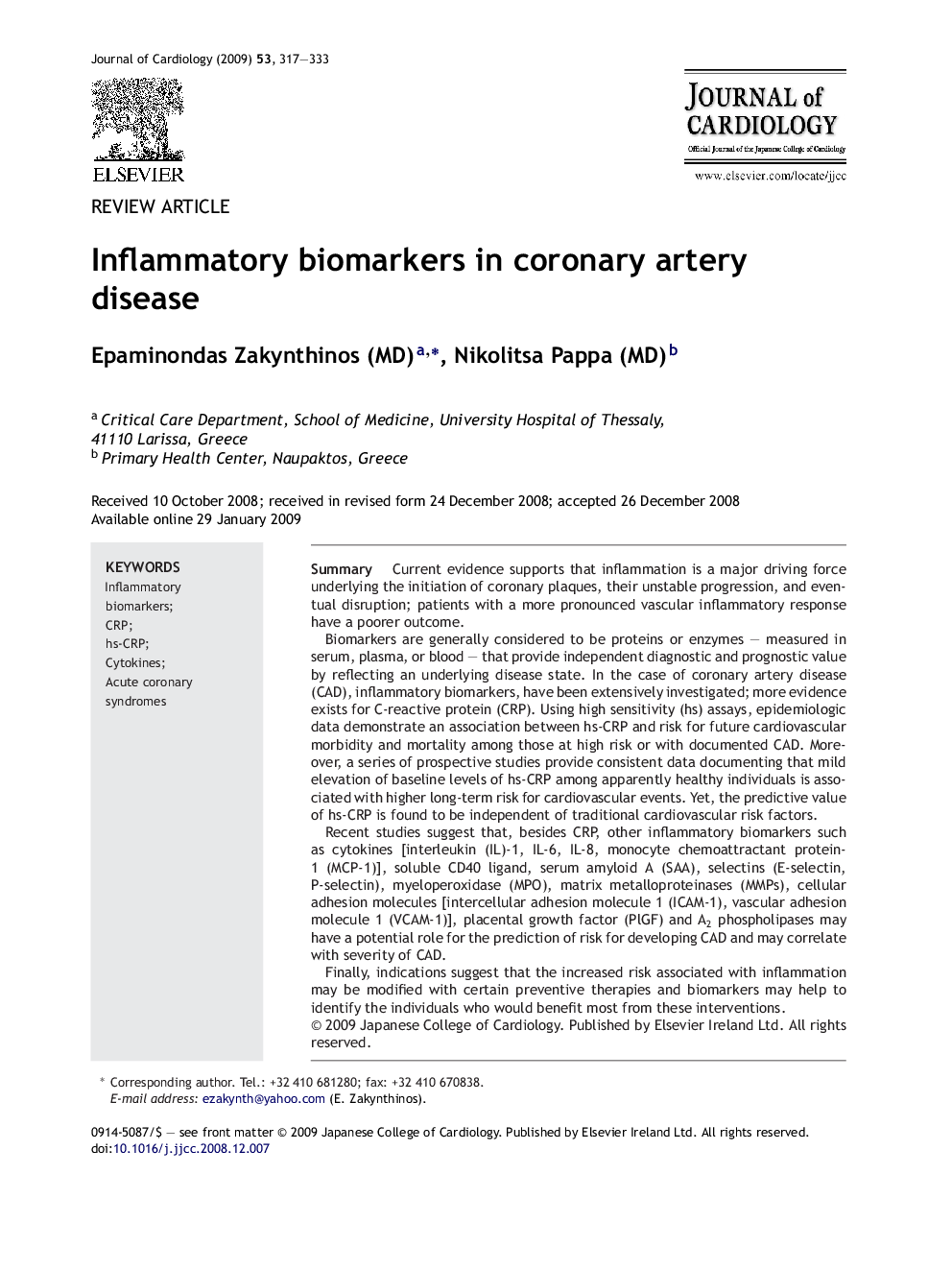| Article ID | Journal | Published Year | Pages | File Type |
|---|---|---|---|---|
| 2963629 | Journal of Cardiology | 2009 | 17 Pages |
SummaryCurrent evidence supports that inflammation is a major driving force underlying the initiation of coronary plaques, their unstable progression, and eventual disruption; patients with a more pronounced vascular inflammatory response have a poorer outcome.Biomarkers are generally considered to be proteins or enzymes – measured in serum, plasma, or blood – that provide independent diagnostic and prognostic value by reflecting an underlying disease state. In the case of coronary artery disease (CAD), inflammatory biomarkers, have been extensively investigated; more evidence exists for C-reactive protein (CRP). Using high sensitivity (hs) assays, epidemiologic data demonstrate an association between hs-CRP and risk for future cardiovascular morbidity and mortality among those at high risk or with documented CAD. Moreover, a series of prospective studies provide consistent data documenting that mild elevation of baseline levels of hs-CRP among apparently healthy individuals is associated with higher long-term risk for cardiovascular events. Yet, the predictive value of hs-CRP is found to be independent of traditional cardiovascular risk factors.Recent studies suggest that, besides CRP, other inflammatory biomarkers such as cytokines [interleukin (IL)-1, IL-6, IL-8, monocyte chemoattractant protein-1 (MCP-1)], soluble CD40 ligand, serum amyloid A (SAA), selectins (E-selectin, P-selectin), myeloperoxidase (MPO), matrix metalloproteinases (MMPs), cellular adhesion molecules [intercellular adhesion molecule 1 (ICAM-1), vascular adhesion molecule 1 (VCAM-1)], placental growth factor (PlGF) and A2 phospholipases may have a potential role for the prediction of risk for developing CAD and may correlate with severity of CAD.Finally, indications suggest that the increased risk associated with inflammation may be modified with certain preventive therapies and biomarkers may help to identify the individuals who would benefit most from these interventions.
